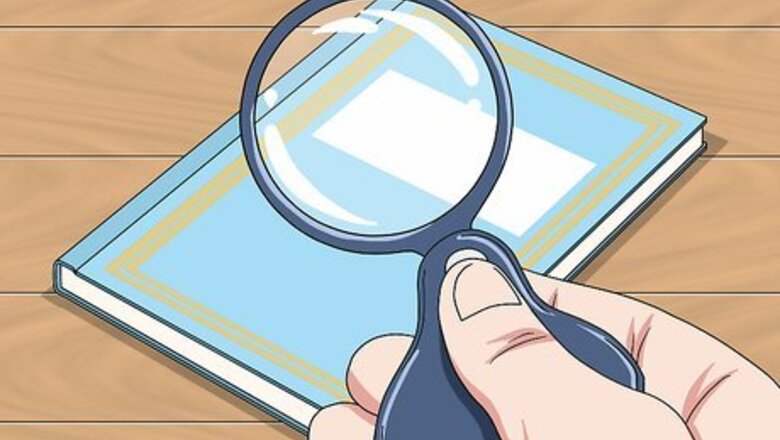
views
Examining the Book and Using the Internet
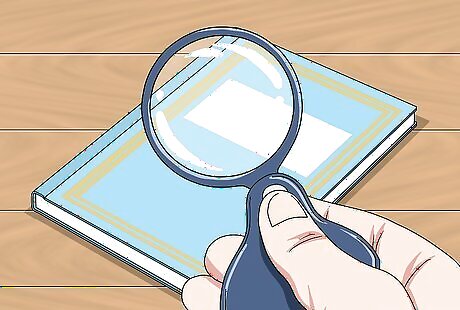
Look for the reading level on the book. Many books, especially children’s books, will list the reading level somewhere on the book. Ultimately, this might be the easiest way for you to find out the reading level of a book. Check: The front cover The back cover The first few pages of the book
Examine the book's contents for their complexity. Scan through a few pages to get a feel for the book's level. Longer words will indicate a higher reading level, as will complex sentences. You should also look for words that suggest a specific audience. For example, rhyming sentences may indicate the book is for younger kids, while words related to school suggest the book is for school-aged kids. Use your prior reading experience to estimate how difficult the sentence structure is.
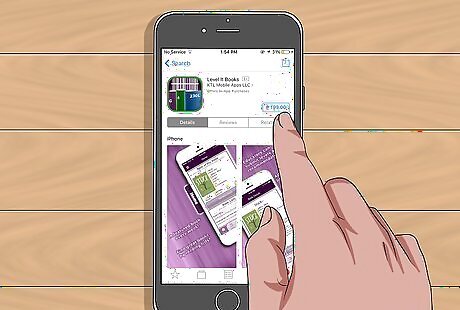
Download apps that help you determine reading level. There are a variety of mobile device applications that you can use to determine a book’s reading level. These apps work by scanning the ISBN of a book and then cross-referencing it with different databases that address reading levels. Simply: Search your specific app store for reading level applications, then download the app. Some apps, like Levelit and Literacy Leveler, will allow you to scan the book’s ISBN and then view the book’s Lexile score, grade level equivalent, and other data.
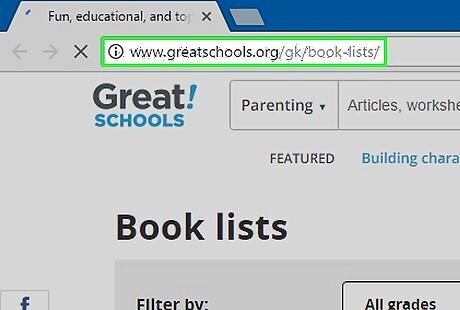
Consult book lists for a child’s specific age or grade. There are a wide variety of books lists available on the internet for your child’s age or grade. While every book might not appear on a given list, many lists are fairly comprehensive. Consider: The New York Public Library’s book lists at https://kids.nypl.org/book-lists. These lists contain books for children in Pre-K to 6th grade. Grade level lists at https://www.greatschools.org/gk/book-lists/ Book lists at https://www.scholastic.com/teachers/bookwizard/
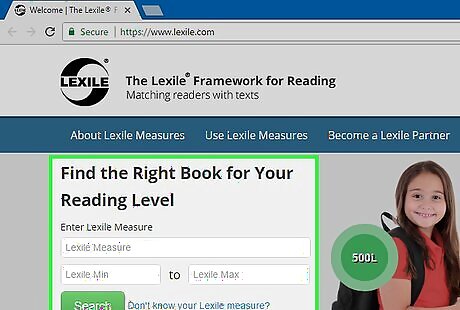
Determine the Lexile level. The Lexile level of a book is a measure for determining its reading level. To determine the Lexile level of a book, you can use the search function on Lexile.com. Simply: Visit https://www.lexile.com/ Enter the title, author, or ISBN of a book in the “Quick Book Search” box in the upper right of the website. Then, click “search.” The website will return various versions of the different book, along with an age-range of the book, and the Lexile reading score.
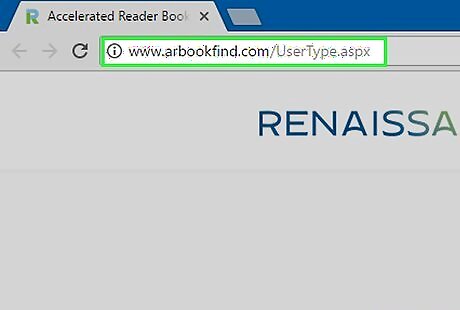
Use the Accelerated Reader search tool. Accelerated Reader is a database in which you can input the title of a book and it will return you relevant information, such as the reading level of that book. To access it: Visit https://www.arbookfind.com/default.aspx Enter the title of the book in the “Quick Search” box and hit enter. The website will return information about the book including the “Interest Level” of the book, the readability book level, and the Lexile level of the book.
Using the Flesch-Kincaid Scale

Select three passages from a book. After reviewing the number of pages in the book, pick three pages at random. Try to pick pages from different parts of the book. Then, verify that each page you’ve chosen has at least one full paragraph. If it does not, choose a paragraph from the next page. If the book has 80 pages, you could select pages 5, 25, and 75. Any page number will work. Then make sure each page has a full paragraph. If page 25 is an illustration, use a paragraph from page 26.
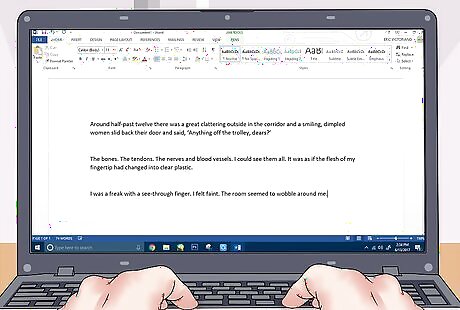
Type the three paragraphs into Microsoft Word. Do so slowly and accurately. It’s important that you include all three paragraphs, since this will give you a large enough sample so you can get a true idea of the reading level of the book.
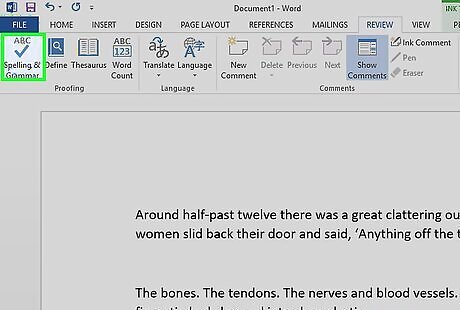
Hit “Spelling & Grammar.” After typing the three paragraphs you selected, you need to hit the spell check button in Microsoft Word. When you hit spell check, Word will check your spelling and then generate statistics on the passages you typed. Read through the list until you see “Readability.” Under that, you’ll see the Flesch-Kincaid grade level. If your Word does not display the Flesch-Kincaid Scale level, go to File, then go to Options, click on Proofing, and then click the box that says, “Show readability statistics.” Now, whenever you use the spell check function, Word will display the grade level of whatever you have typed.
Trying the SMOG System
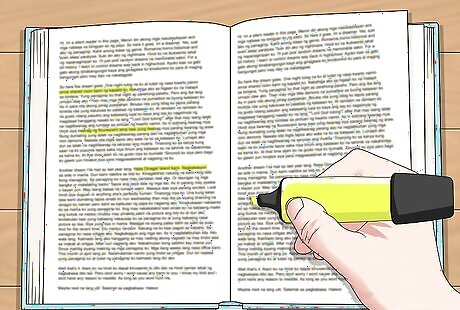
Choose 30 sentences from a book. Make sure to pick 10 from the beginning, 10 from the middle, and 10 from the end of the book. It is important that you choose sentences from all parts of the book, as that will give you a much more accurate idea of the level of the book.
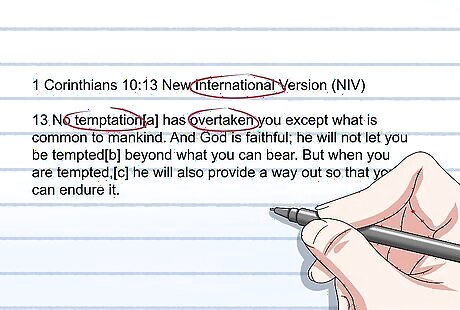
Circle and count any word that has 3 or more syllables. Go through your chosen sentences and circle all words that have three or more syllables. You can identify these words by speaking them aloud and seeing how many separate sounds you hear. Alternatively, you can hold your hand under your chin as you say the word and feel how many times your chin goes down. This will include repetitions of the same word. Tally these words up. Count: Hyphenated words as one word. Long numbers that are spelled out. Abbreviations as if they were spelled out completely.
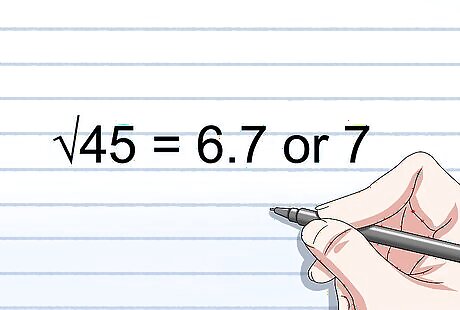
Calculate the square root of the 3-syllable words. Take the total number of 3-syllable words in the 30 sentences you selected and calculate the square root. Round the square root to the nearest whole number. To give you an example, if your 30 sentences had 45 3-syllable words, the square root would be 6.7. Round this to 7. You can calculate square root by hand or by calculator. You can access an online calculator here: http://www.math.com/students/calculators/source/square-root.htm
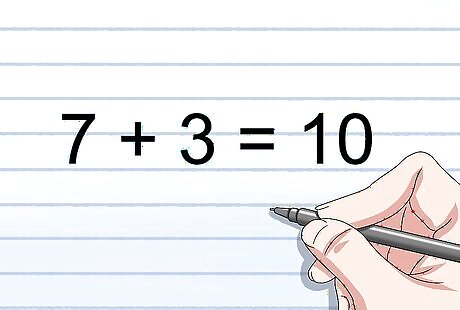
Add three to the square root. After you round the square root to the nearest whole number, you’ll need to add 3 to that number. This will give you the SMOG grade level (reading level) of the book you choose. For example, if you had 45 3-syllable words with a square root of 6.7, you should round that to 7, and then add three. This will give you a SMOG grade level of 10. This means the book is appropriate for children in the 10th grade.
Using Reading Levels
Approximate your child's reading level. Have the child read a passage in a book that is at their grade level. Then ask them to explain what the passage means. You should also ask them questions about the passage. If the child understands the passage and can answer most of the questions, they are likely reading on grade level. If the child struggles with the passage, they may be reading below grade level. If the child shows high levels of understanding, then they may be reading at a higher grade level. You could ask, "What do you think Sarah will do next?" or "Why do you think Sarah refused to help her friend?" If you suspect the child is reading at a higher grade level, you can repeat this process with a harder reading selection.
Allow children to read beyond their determined reading level if they can. Not everyone reads at the same level, and it's normal for some people to read at a higher level than their grade level. In this case, a higher reading level book may be more appropriate for that child. Ask the child to explain what they are reading to determine if it's a good book for them. Check over the books your child chooses to make sure they don't have content that may be inappropriate for the child, such as adult themes. You can ask the child's teacher or librarian for suitable books.
Choose books at a lower reading level for children who struggle. It's also normal for some children to read below their grade level, and that's okay. If your child is a struggling reader, help them find books that are at their current level. Read with them more to encourage reading, which will help their skills improve. Reading is important for language development and will be necessary as the child continues through school. Try to find books about a topic the child loves, such as sports or horses.




















Comments
0 comment